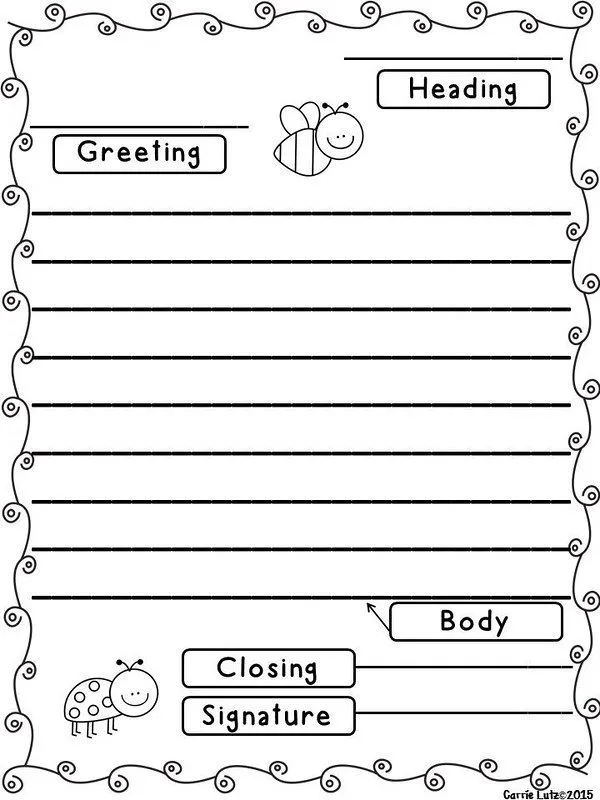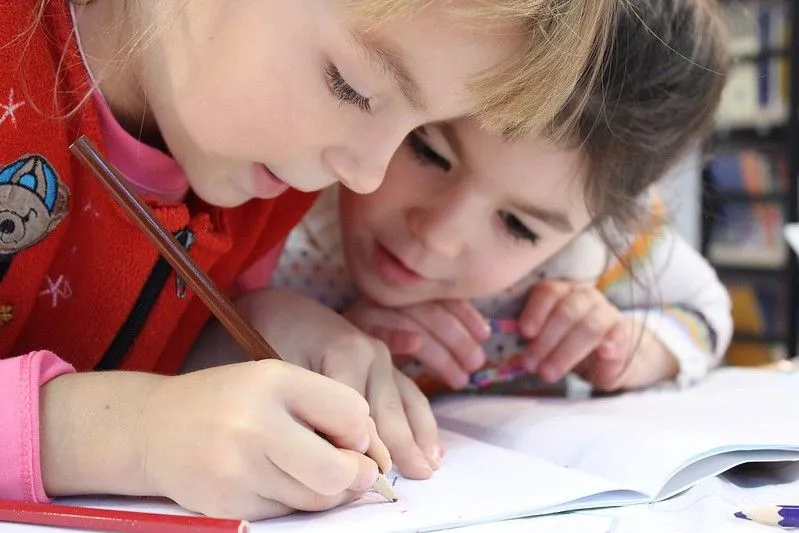FOR ALL AGES
The art of letter writing is something everyone should strive to achieve, whether it’s writing regular letters to family or pen pals or simply writing them for fun, it’s a chance to express yourself and communicate in a unique and exciting way. Plus, given current times it means that we aren’t always able to physically see our loved ones and whilst video calling and text messaging are great ways to keep in contact, letter writing is just that extra bit special! Yes, letter writing can seem old-fashioned and outdated but not only does it promote mindfulness and help to stimulate creativity but it also makes a super fun surprise for the person on the receiving end - who doesn’t love seeing their name on the post? However, we appreciate that it can be a little tricky to encourage youngsters to write letters so we’ve listed below our top tips for writing the perfect letter and outlined some traditions of letter writing to ensure you’re all clued up before putting pen to paper!
- Date and Address:
Every good letter needs a date in the top right-hand corner and of course the address of the recipient. Not only is writing the date in a letter an age-old tradition, but it’ll also help you to identify when it was written in years to come, which is super important when it comes to reminiscing about the past! When writing the address it should follow this format:
House Number/Name, Street Name
Town, Postcode
At first, it might feel a little unnatural to be writing addresses and perhaps even a bit old-fashioned but correctly formatting a letter is some of the fun!
- The Greeting:
Whether you’re writing a formal letter, perhaps to your teacher (or even the Prime Minister!), or a more informal letter to family or friends, the greeting is super important. If it’s a formal letter, the greeting is typically ‘Dear …’ or ‘To whom it may concern’ when the recipient's name or title is unknown, for example, if you’re writing to a company. Alternatively, if you’re writing a letter to a family member, friend or someone of a less formal nature, a simple ‘To ...’ or even ‘Hi ...’ is perfectly acceptable. Plus, don’t forget to leave a line after writing the greeting and to start your next sentence with an indent.

- Body of The Letter:
Now comes the best part - the actual message! Here you’re free to write whatever you wish; whether it be an update on what life is like in lockdown or maybe you want to write to a hospital to thank them for the incredible work they are doing, it’s your chance to express yourself and be creative!
- Closing:
After you’ve written the body of your letter, it’s not ready to send until you’ve signed it off. For a more formal letter, the traditional sign-offs are either ‘Yours Sincerely’ or ‘Best Wishes’ and for an informal letter it’s entirely up to you. Then just sign your name and you’re good to go!
Explain to your little ones why writing letters is so brilliant! Perhaps they’ve written letters to Santa Claus in the past - this is a great example of how letters can be used to communicate with someone who, let’s be honest, is pretty difficult to get a hold of! And in the current circumstances, it’s important to find alternative ways to communicate with our loved ones and writing letters is a super simple and heartfelt way that is bound to put a smile on the recipient's face!

Stick to the style - although letter traditions can seem outdated, that’s what makes letters, letters! Follow our structure above and you’ll have yourself the perfect letter. It’s super important to ensure that all contact details are written clearly at the top and that your letter includes all the necessary details - that way it’ll go straight to the right address. Missing letters are the worst!
Letters don’t have to be super long - when you think of letters, lengthy pages of writing might come to mind but fear not, your letters can be as short or as long as you wish! Letter writing is a chance to be super self-reflective and express your feelings and thoughts and no one can put a judgement on how long or short you want to write for. Plus, sometimes it’s nicer to send shorter, more frequent letters, that way it’s something you can do more regularly and maybe even build into your weekly lockdown routine.

You can even send your letters online - Now we know most letters are traditionally sent via post or even in some cases, posted through the front door of the recipient but given these strange circumstances, it might be a better option to ‘post’ your letters online. We suggest following the same format, perhaps on a Word document or GoogleDoc, and then email it over to the recipient. Not only is this a super simple and free way of ‘posting’ your letter but it also means that you can insert pictures as you wish, to bring the writing in your letter to life!
Keep it up and encourage others to get involved! Not only is consistently writing letters super exciting as your kids eagerly wait for the response but it’s also a great activity to keep little ones occupied and allow them to reflect on the current circumstances, which is extremely beneficial for mental wellbeing and positivity in general.
Not all letters have to be addressed to family or friends, you can be as creative as you want when writing. See below for our top 3 creative suggestions to get your imagination going and to help your little ones practise.
1) Your favourite character - have your kids been watching a little more television during lockdown and found themselves obsessing over new cartoons and characters? Why not write a letter to your favourite character(s)! Tell them about your life in quarantine, maybe describe your daily routine in lockdown and explain why you love watching them on television! If you’re feeling super creative, why not draw a picture of them and send that along with the letter - or if you don’t feel like drawing, there are plenty of black and white sketches of characters just a Google away!
2) Someone you haven’t seen in awhile - whether it be a family member or a friend that you’ve been missing in lockdown, sending them a letter is a great way to communicate and is bound to put a smile on their face! Picking up a pen and putting it to paper is so much more heartfelt than a quick text message, plus, writing down your thoughts and feelings instead of typing them on a screen can sometimes prove more relaxing and great for putting any feelings of anxiety at ease.
3) NHS workers - the heroes of our current time! Writing to hospitals is an extremely heartfelt gesture that doesn’t go unnoticed. Now’s your opportunity to thank them for the incredible work that they are doing and show your support. Plus, it’s a chance to use some of the more formal aspects of letter writing that we mentioned earlier. For example, the opening ‘To whom it may concern’ would be appropriate here as you’re addressing an entire hospital and an entire body of workers, not a single worker specifically. As well as this, you might want to attach an A4 picture or drawing of a rainbow to show your support for the inclusivity of the NHS!

Read The Disclaimer
At Kidadl we pride ourselves on offering families original ideas to make the most of time spent together at home or out and about, wherever you are in the world. We strive to recommend the very best things that are suggested by our community and are things we would do ourselves - our aim is to be the trusted friend to parents.
We try our very best, but cannot guarantee perfection. We will always aim to give you accurate information at the date of publication - however, information does change, so it’s important you do your own research, double-check and make the decision that is right for your family.
Kidadl provides inspiration to entertain and educate your children. We recognise that not all activities and ideas are appropriate and suitable for all children and families or in all circumstances. Our recommended activities are based on age but these are a guide. We recommend that these ideas are used as inspiration, that ideas are undertaken with appropriate adult supervision, and that each adult uses their own discretion and knowledge of their children to consider the safety and suitability.
Kidadl cannot accept liability for the execution of these ideas, and parental supervision is advised at all times, as safety is paramount. Anyone using the information provided by Kidadl does so at their own risk and we can not accept liability if things go wrong.
Kidadl is independent and to make our service free to you the reader we are supported by advertising.
We hope you love our recommendations for products and services! What we suggest is selected independently by the Kidadl team. If you purchase using the buy now button we may earn a small commission. This does not influence our choices. Please note: prices are correct and items are available at the time the article was published.
Kidadl has a number of affiliate partners that we work with including Amazon. Please note that Kidadl is a participant in the Amazon Services LLC Associates Program, an affiliate advertising program designed to provide a means for sites to earn advertising fees by advertising and linking to amazon.
We also link to other websites, but are not responsible for their content.
Was this article helpful?



Browse Category



We’ll send you tons of inspiration to help you find a hidden gem in your local area or plan a big day out.



Check your inbox for your latest news from us. You have subscribed to:
Remember that you can always manage your preferences or unsubscribe through the link at the foot of each newsletter.